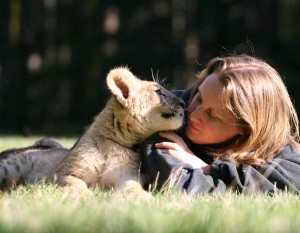One of the first and most critical decisions that needs to be made by any dog owner is what vaccination protocol to utilize. There are many conflicting opinions on this matter, and I would encourage you to peruse them all. Whatever plan you select will have a significant impact on the lifelong health of your animal, and the decision should be based on rational thought and current available information, not fear, superstition, or unfounded assertion by companies or people with agendas other than your animal’s health. Of course you should discuss your vaccine thoughts with a trusted veterinarian before reaching any decisions, but do not assume that your vet knows the one right answer. In the page below I summarize our thoughts on the question…
Background Information
From 1796 to 1976, vaccination was one of the greatest areas of medical and veterinary advancement. During that time, hog cholera and smallpox were virtually eradicated, and a plethora of other diseases went from epidemic killers to infrequent curiosities. By 1980, there were vaccines available for most common canine diseases, and the veterinary community had developed an abiding sense that vaccines were a harmless panacea that could be used to prevent almost every infectious disease in dogs. Since there was no apparent downside, vaccines were given early and often. Since maternal antibodies might interfere with vaccination, repeated administration was recommended, and since duration was unknown, annual revaccination was universally endorsed.
The dog community embraced this revolution, and frequent vaccination became a hallmark of responsible care. “Up to date” on shots became a baseline expectation for care, and many pet owners happily vaccinated their dogs every year.
In the early eighties, several researchers independently observed a possible correlation between vaccination and several ailments and began studying this connection. Over the following 25 years, a huge number of vaccine related ailments were posited, and study after study suggested that vaccination was causing a real degradation in overall canine health as well as possibly inducing several acute ailments. It quickly became clear that for all their benefits, vaccines posed an overall health risk and a balance needed to be found. Vaccines were significantly implicated in:
- Allergies
- Autoimmune diseases
- Leukemia
- Thyroid disease
- Addison’s disease
- Grave’s disease
- Injection site sarcoma
- Diabetes
- Lupus
- Thrombocytopenia
- Organ failure
- Skin inflammation
- Encephalitis
- Lymphoma
- Behavioral changes and phobias
- Autoimmune hemolytic anemia
- Arthritis
- Epilepsy
At the same time, researchers began studying the duration of various vaccines and questioning the notion of annual revaccination. Time and again their studies suggested that vaccine duration was far longer than previously believed, and in many cases appeared to last for the animal’s lifetime.
Situation Today
At present, there is no absolute consensus concerning an ideal vaccination protocol for dogs. Each owner must make their best informed decision. However, in the past few years, virtually every veterinary university in North America and the AVMA have revised their policies and issued statements on vaccines to accommodate the evidence that they pose serious health risks which are not yet fully understood. This difficulty is exacerbated by the fact that many veterinarians are not providing good advice–their schooling came before or during the current upheaval, and they have not been motivated or inclined to stay current. Unfortunately, many vets are simply repeating past beliefs and continuing to advocate for multiple puppy vaccinations with annual revaccination, ignoring the last few decades of research. This is habitual and comfortable for them, and allows them to hide behind the veil of “manufacturers recommendations” when they advise vaccination protocols which clearly are not supported by current research. It has several ancillary consequences:
· It ensures that dogs are brought in to the vet at least once a year. This is often a good thing. Many owners are unobservant and their dogs may have unnoticed problems that need medical attention.
· It allows veterinarians to earn a living. A substantial portion of most veterinarians income derives from these annual visits.
Unfortunately it is not what is best for most dogs.
As explained in Current Veterinary Therapy XI (Ron Schultz, Ph.D., and Tom Phillips, DVM):
“A practice that was started many years ago and that lacks scientific validity or verification is annual revaccinations. Almost without exception there is no immunologic requirement for annual revaccination. Immunity to viruses persists for years or for the life of the animal. Successful vaccination to most bacterial pathogens produces an immunologic memory that remains for years, allowing an animal to develop a protective anamnestic (secondary) response when exposed to virulent organisms. Only the immune response to toxins requires boosters (e.g. tetanus toxin booster, in humans, is recommended once every 7-10 years), and no toxin vaccines are currently used for dogs and cats. Furthermore, revaccination with most viral vaccines fails to stimulate an anamnestic (secondary) response as a result of interference by existing antibody (similar to maternal antibody interference). The practice of annual vaccination in our opinion should be considered of questionable efficacy unless it is used as a mechanism to provide an annual physical examination or is required by law (i.e., certain states require annual revaccination for rabies).”
or as stated by Christine Chambreau, DVM:
“Routine vaccinations are probably the worst thing we do for our animals. They cause all types of illnesses but not directly to where we would relate them definitely to be caused by the vaccine.”
There is still much to learn about canine immunology and vaccination, and I am confident that we will be doing a far better job in 20 years than we are today, but what we know today already allows us to do a far better job than simply reiterating the advice of 25 years ago…
What Should a Concerned Dog Owner Do?
There is no single correct answer to which vaccinations to give your dog and how often: make the best informed decision you can make given the current information and the details of your situation. Talk to trusted experts, read current research, consider your dog’s health and circumstances, and weigh the risks of not vaccinating against each disease against the benefits. Do not trust me, or your friend, or even your vet to have the right answer because there is no right answer. There is only the best answer for you.
Regardless of what you decide to do about vaccinations, we should all agree that the single best thing we can do to prevent disease in our dogs is to create healthy dogs with robust immune systems. Breeders need to be breeding with this in mind, but each of us can take monumental steps for our dogs:
- Diet
- Exercise
- Weight
- Lifestyle–it has been demonstrated time and again that happy, low stressed individuals are less likely to succumb to illness. So keep your dog’s life happy and low stress.
- Environmental toxins–it is genuinely frightening to consider the nearly constant exposure our dogs face to environmental pesticides, herbicides, paints, vehicular poisons, chlorine, secondhand smoke, etc. All of these tax their immune systems. Do anything and everything you can to reduce exposure to toxins.
Enough Theory Already–what vaccines do you give?
As far as which vaccines to administer today, begin by understanding that you cannot protect your dog against all disease, and if you try, you will do genuine harm. No question–we should continue to use vaccines to avoid serious disease in our dogs. Also no question at this point that over using vaccines adds no value and significantly degrades health.
In my opinion, based on what we know today, there are three medically warranted inoculations in the lifetime of a dog:
- successfully seroconverted rabies
- successfully seroconverted distemper
- successfully seroconverted parvovirus
To accomplish these three and ensure maximal health is relatively simple: Titer-test for maternal antibody depletion if desired, and administer a single vaccine for distemper or parvo. Wait ten days and titer test for seroconversion. If conversion has been achieved (a positive titer test), wait four more days, so a total of at least 14 days has elapsed and repeat the process for the other disease. Then repeat each of these 6 months later at the same 14 day interval (to stimulate a secondary immune response after the immune system was primed and thereby achieve maximal protection) and you have a dog with likely lifetime immunity against parvo and distemper. (There is a real question as to which disease you should do first. Parvo is the greater risk, but maternal antibodies for parvo tend to significantly outlast maternal antibodies for distemper. Personally I do distemper first because the window is open sooner.) Rabies is a particularly challenging disease to address. In my experience, it is one of the most harmful vaccines, and I have observed several cases in which behavioral changes after this vaccine were marked. This is purely anecdotal, but was absolutely unmistakable in my opinion–animals that had never before shown any aggression suddenly becoming markedly less tolerant and more pugnacious. On the other hand, rabies is a horrific disease that is virtually always lethal and is zoonotic. The rabies vaccine has saved millions of lives, and rabies is not a disease we should ever take lightly. Furthermore, rabies vaccinations are legally required on a fixed schedule in most places, so until the law changes there will be few legal options, despite the likelihood that rabies immunity is lifelong and the fact that rabies is a fairly rare disease in most areas. At present, those are the only three vaccines we give.
Depending on your environment, your risk tolerance, and your general world view, you might select to give fewer vaccines (distemper is rare, and parvo is usually treatable successfully these days) or you might decide to give more. I believe that ANY vaccinations beyond the above should be carefully examined and justified in a particular case. The “other” diseases commonly vaccinated against in the US are either so rare or so insignificant in terms of risk as to be irrelevant in my opinion. Vaccinating against them seems to risk a dogs health far more than it protects. These diseases include:
- Hepatitis / Canine Adenovirus II–there have been few, if any, documented cases in the US in approximately 20 years.
- Parainfluenza, Bordatella, CAV I–these three diseases are almost always trivial. Furthermore, in my experience, despite repeated exposure, none of my unvaccinated dogs have ever shown any symptoms, while many of the vaccinated dogs around them have coughed for weeks. These disease are similar to getting a cold, and in my opinion the risks far outweigh the benefits of these illnesses.
- Leptospirosis–most common cause of immediate negative vaccine reactions, and is effective only against some strains (estimates range from 20%–70% efficacy). This vaccine does not last long, and can prevent symptoms while allowing the dog to transmit the disease. Leptospirosis is a serious disease, and can be deadly, although many cases can be treated successfully. Lepto is fairly common in wildlife populations, so this vaccination warrants consideration and discussion based on your lifestyle and locale.
- Corona–even in a laboratory where dogs are intentionally exposed to corona, there are virtually never symptoms exhibited.
- Lyme–vaccine causes the same symptoms it is supposed to prevent.
- Giardia–is generally symptomatic only briefly if at all in otherwise healthy animals, and is easily cured.
Whatever vaccines you decide to administer, there is very little reason to give them simultaneously. Common multi-antigen vaccinations are unquestionably hard on an animals immune system. Try never to attack your dog’s immune system in more than one way at a time. If you have administered an antigen, do not administer another. And do not simultaneously administer topical or internal insecticides including flea or tick preventatives, wormers, heartworm preventatives, etc. Let your dog’s immune system focus on one thing at a time.
Social Pressure
Many people still believe that any dog who has not been annually vaccinated is being neglected. Humane societies, vets, pharmaceutical companies, obedience schools, and daycares all perpetuate this myth. They continue harming their dogs with excessive vaccinations and believe that anyone not doing the same is taking a needless risk. Furthermore, many of them have an incorrect understanding of immunology and believe that a less-vaccinated dog poses an environmental risk to other dogs. This is erroneous–even if your dog were unvaccinated, he is no likelier to be carrying the disease than any other dog, and in fact is less likely to be shedding disease or to be an asymptomatic carrier. However, many of these institutions will not allow your dog unless you have proof of numerous unnecessary vaccinations. I have no real solution to offer except to attempt to educate these people or take your business elsewhere.
Immune Memory
There seems to be considerable confusion among dog owners about how immune memory works, so here is a brief overview: At present very little science supports the notion that memory cells “forget,” and there is a huge and growing body of data indicating that they do not, so there is little rational justification for repeating shots throughout adulthood, and there is considerable evidence that doing so compromises overall health. Most people are simply scared, uninformed, willing to sacrifice canine health to possibly protect human health, and require “proof” that a dog could not lose immunity over time before they would significantly reduce the revaccination requirement. Alas, proving that something could not happen is virtually impossible, but try to find a vet who has seen a case of parvo in an adult dog that was ever successfully vaccinated, even among rural populations that tend to not do any adult veterinary care–it simply does not happen.
That immune memory is long lived has been empirically recognized since Ancient Greece when it was observed that once a person had a particular disease in childhood they would likely never have that particular disease again. However, the most commonly quoted seminal moment of truth came in 1847 when a measles epidemic on the Faroe Islands infected virtually every inhabitant of the island, except for those people who were old enough to have lived through the last measles outbreak 65 years earlier. This was extremely interesting because it was clear from the universality of infection that there had been absolutely no measles present on the island otherwise some of the inhabitants would have gotten ill and become immune. It was therefore demonstrative that the older residents had maintained immunity without any boosters, and without ANY external measles exposure for 65 years. This same “experiment” was repeated on several isolated islands and in numerous labs. From then on, it has been widely accepted by immunologists that immunity, once achieved, is in most cases extremely long lived and likely permanent.
While it is clear that immunity is generally long lived, it is less clear how… There are several ways in which the immune system maintains memory, and there remains some uncertainty how they work together to maintain immunity for such long periods. Furthermore, any discussion of immunity is complicated by the fact that some diseases behave differently then most others. For example, T-cell independent antigens do not yield immune memory at all. So there are many exceptions and plenty of room for confusion.
However, since canine immune memory for distempter, parvo, and rabies behaves similarly, we can avoid discussing the exceptions for practical purposes of canine vaccine decisions. Throughout most of a dog’s body there exists a network of specialized cells whose purpose is to capture and process antigens. These are called dendritic cells. A subset of these cells, follicular dendritic cells, store antigen/antibody complexes called iccosomes for each antigen the dog has previously encountered either through exposure or vaccination which they present to B-cells periodically. The B-cells then present peptides to T-cells to “refresh” their memory. (It is interesting to note that antigen that has been thus processed is extremely potent in stimulating T-cells, around 10,000 times more efficient than unprocessed antigen) It is not fully understood how often or why this refreshing occurs, but if you take the T or B cells out of one rat and put them in another rat who has been irradiated to ensure no immunity, the B and T-cells will confer immunity for less then a month, so we can be fairly certain it is the action of the follicular dendritic cells that prolongs immune memory to last for many decades. Furthermore, we are fairly certain that the antigen complexes can persist indefinitely in the dendritic cells, forming new external iccosomes as needed, so it is generally believed that this is the process which confers lifetime immunity to these diseases.
Titers
Many people have begun using titers as a tool for their dogs; unfortunately, there seems to be fairly widespread misunderstanding of what titers mean. Higher titer do not indicate superior immunity. A titer measures level of current antibodies, so a low titer does NOT mean low immunity because if the animal was previously immune but has not recently been challenged it could have a low or nonexistent titer, and any positive titer indicates the existence of antibodies from which you can deduce the presence of memory cells. I hate to imagine people revaccinating because of a low or nonexistent titer, but unfortunately when I hear of people annually or frequently re-titering I suspect that is precisely what they are erroneously thinking. Antibodies die in the absence of challenge. Immune memory generally does not. Titers go down when antibodies go down and say NOTHING about memory. If you have a dog that has been successfully vaccinated for parvo, next time he has a low titer for parvo, take him somewhere you know parvo has recently been, then re-titer him–titers will magically have gone way up because memory cells, as their name implies, exist to remember and will produce antibodies as needed.
More information
If you want to learn about the current status of vaccination knowledge, I strongly suggest reading the works of:
Ronald D. Schultz, Richard B. Ford, Jean Dodds, Duval, Glickman, Frick and Brooks, FW Scott, Dennis Macy, Leland Carmichael, Richard Pitcairn
A few good sites on vaccination:
www.caberfeidh.com/PuppyVax.htm
www.itsfortheanimals.com/Adobe/AdverseVaccReactions.pdf
www.caberfeidh.com/Revax.htm
AVMA Council on Biologic and Therapeutic Agents’ report on cat and dog vaccines
www.altvetmed.org/articles/vaccinations.html
www.wellpet.org/vaccines/dodds-schedule.htm
www.animalwellnessmagazine.com/m/m86/main.htm
Purdue Vaccine Study
Considerations in Designing Effective and Safe Vaccination Programs for Dogs
www.holisticat.com/vaccinations.html
www.vmth.ucdavis.edu/vmth/clientinfo/info/genmed/vaccinproto.html
www.austinholistic.com/articles/FW001.html
www.britfeld.com/vaccination-adverse.htm
www.dogsadversereactions.com/vaccines.html





